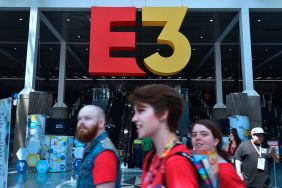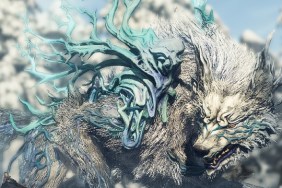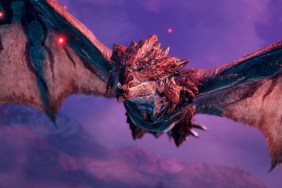Soully defined.
[PC version update: If you have a high-end PC, getting this version is no-brainer. Even if you already own a PS3 or X3650 SKU, you should consider re-purchasing the game for PC, if just for the silky-smooth 60fps in 1080p with shorter loading times, quicker menu interactions, and hardly a frame-rate drop in sight. Peer off Majula's seaside cliff once more and soak in the view of the ocean waves against the setting sun. Gain the courage to battle the Looking Glass Knight again… maybe.
This build also comes with the option to use a mouse and keyboard, which works well in combat but not so much with menu navigation. It's clear that the Xbox 360 controller or Dualshock4 controller, if you so choose, is the way to go. The PC version is priced at $49.99 on Steam with extra items for pre-ordering.]
The Souls franchise is one of a very select group of games that have the license to sweep any criticism under the rug by uttering the phrase, "Well, maybe you should stop sucking." Indeed, there's a cardinal rule in this precarious world of professional game reviewing and that is never to lower the score for a game simply because you're not great at it and have difficulty completing it. It's a sentiment that Demon's Souls, Dark Souls, and now Dark Souls II tests to the utmost limit, and it never apologizes for its fiendish torture and uncompromising difficulty. In fact, it wants nothing more than to lick your angry, angry tears.
So if you're wondering what I'm talking about, it's me—the guy who has already died so many times that he's lost count. Two times in the tutorial section. Eight times due to pitfalls. About twenty times due to impatience. More than twenty times due to the sentinel trio in The Lost Bastille whom I have yet to defeat and whom I will curse in my sleep forevermore. (Update: I've defeated them finally.) And a few more times just for kicks because that's what you're supposed to do.
Of course, if you're a consummate Souls veteran, then that last paragraph must be heaven to your ears—in the most hellish way possible. Don't worry about this sequel pandering to casual players or whatever you might have heard on trollish forum threads and well-edited quotes by From Software developers. The learning curve is certainly slower, easing players in with several tutorial sections, a handful of breezy bosses, an extensive character creation, and the hauntingly beautiful seaside town of Majula that acts as the central hub for the cursed kingdom of Drangleic. But after about eight bonfire checkpoints, Dark Souls II shows its true hand (which it shall then use to beat you into submission).
Despite a few minor adjustments to the gameplay mechanics, Dark Souls II plays more or less as you expect it would: plenty of derelict castle ruins, cursed caves that reek of the undead, healing estus flasks that regenerate at a bonfire, souls earned by conquering foes and spent on weapons and leveling, excessive rolling into empty barrels and crates, boss strategies that emphasize patience and spacing, and circle strafing around locked-on enemies to create openings in the enemy's attack animations. None of this should sound out of place. So long as you're cautious, conserve stamina for running and blocking, move around the space so as not to be surrounded, and pick your spots for stabs and combos, most grunts will fall by the wayside; otherwise, you'll be punished severely, sometimes with death in three hits… sometimes fewer than that.
As such, Dark Souls II is a game of inches. Whether it's crafty enemy placement, hazardous pathways that (as gorgeous as they might be) force you along thin strips of pavement, or bosses with cheap tricks, you probably won't survive most levels the first time through. So it's about learning from your mistakes, trudging forward ever so slightly until you hit the next fast-travel bonfire. The only trouble is the altered humanity system, which punishes you every time you perish with a 5% hit on your maximum HP. It may not sound like much, especially when compared to previous Souls games, but this hollowing can stack up to a 50% drop.
Though this condition that can be reversed with the use of a human effigy, there are a limited number of them available, so if you happen to run out, you're stuck with a reduced health bar until you find another. Thus, hitting a wall with a particular boss fight only makes that wall grow higher, and eventually that wall might become an insurmountable one. At that point, it feels like you're being punished for trying. With any luck, you won't find yourself approaching this downward spiral, but the hollowing abyss is an ever-looming possibility should you find your stock of effigies dwindling to zero. How you react to this pressure will determine your enjoyment.
Thankfully, there are multiple ways to tip the scales in your favor. (Check out my tips guide!) Most direct is leveling up at the cost of souls, increasing stat points tailored to your playstyle whether it's an all-out brawler with a shield and halberd (very effective, by the way) or a spellsword who dabbles in hexes and pyromancy, which is no longer a class this time around. Next is spending souls at vendors for weapons, armor, rings, items, and enhancements to your equipment with the aid of titanite shards, fire seeds, estus flask shards, and other crafting baubles. As you meet various NPCs on your journey (just how did they get past all the enemies anyway?), many will eventually gather at Majula, granting wider access to gear and consumables.
While exploring various areas, you might also come across places that fit Pharros' Lockstones, which usually reveal hidden treasure rooms or have an effect on the environment. Nooks and crannies withholding powerful items litter the battlefield as well, encouraging you to comb through an area until you've truly conquered it. Finally, so long as you remain human, you have the ability to summon forth white phantoms that last a limited time, which can act as a decoy long enough to turn the tide of a boss fight.
Of course, summoning a Samaritan at your side through the grace of other players is even better, though you're just as likely to have your world invaded by pricks who want to make your experience harder than it needs to be. If that weren't enough, AI enemies will occasionally invade your world as well. That said, you can join the Way of the Blue, one of many covenants, which will protect you if another player makes it across the digital plane with ill intentions. Other covenants can be formed as well for various effects, like increasing overall difficulty and enhancing PvP play.
Magic has been nerfed the most, particularly pyromancy which in the right hands was overpowered in Dark Souls. It has been modified greatly to be more limited in power, but they have gone a bit too far. You can't two-hand cast for improved damage, can't free-aim spells, and don't have access to a stronger version of whatever spell you have equipped. The lock-on distance stifles the range of spells as well. Overall, it's a more than a little restrictive to say the least.
Though somewhat safe and predictable, Dark Souls II is more refined and somehow more challenging than its predecessor. This is especially so in New Game+ where enemies dish out more damage and you dish out less, albeit with the promise of new items and a better ending. Dark Souls II takes its license for nostalgically old-school difficulty and, whether you're prepared to die or not, will smite you many times over and smile at every cuss word you fling in its direction. Don't worry, you'll learn to love it.
-
Thoroughly challenging gameplay
-
Softer learning curve
-
Fast-travel bonfires, Majula hub
-
Rewarding exploration
-
Human effigy system
-
PvP and covenants
-
Pyromancy nerfed, but magic nerfed in general a bit too much
-
Looks great for PS3 and Xbox 360
Dark Souls II Review Images
-
Dark Souls II Review Images #1
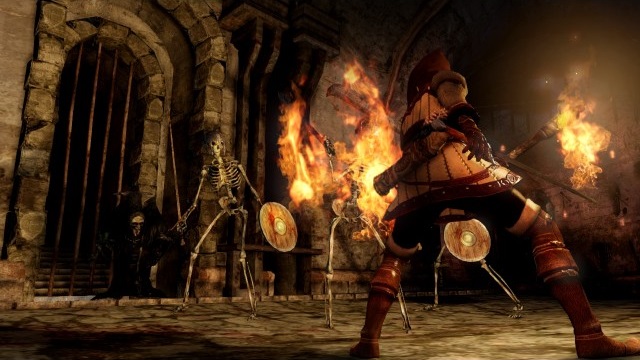 Skeletons are crispier on fire.rn
Skeletons are crispier on fire.rn -
Dark Souls II Review Images #2
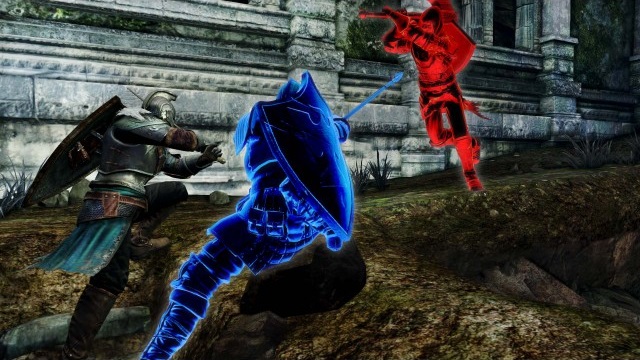 Friend is blue. Enemy is red. Red is bad.rn
Friend is blue. Enemy is red. Red is bad.rn -
Dark Souls II Review Images #3
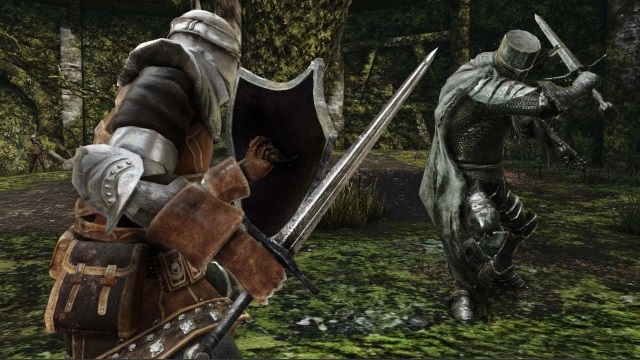 One of the first mini-bosses. Totally looting its corpse.rn
One of the first mini-bosses. Totally looting its corpse.rn -
Dark Souls II Review Images #4
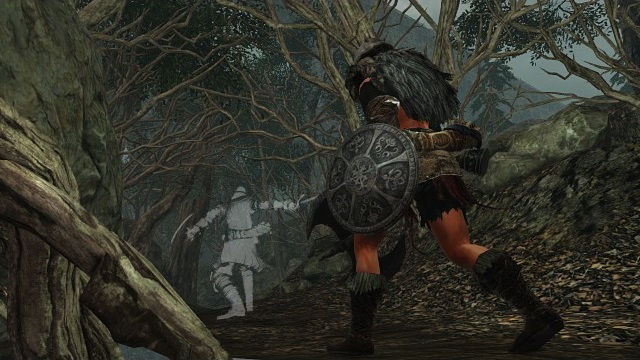 A helpful white phantom... or is that a ghost?rn
A helpful white phantom... or is that a ghost?rn -
Dark Souls II Review Images #5
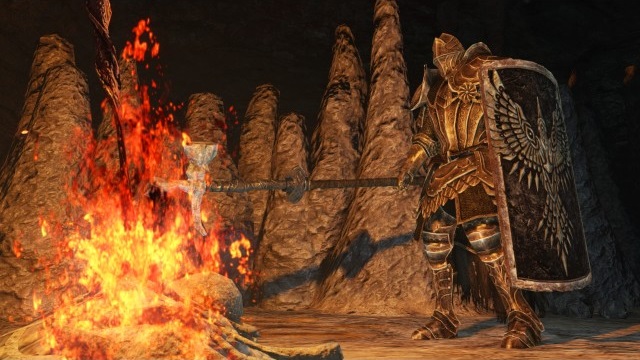 Mmm... toasty.rn
Mmm... toasty.rn -
Dark Souls II Review Images #6
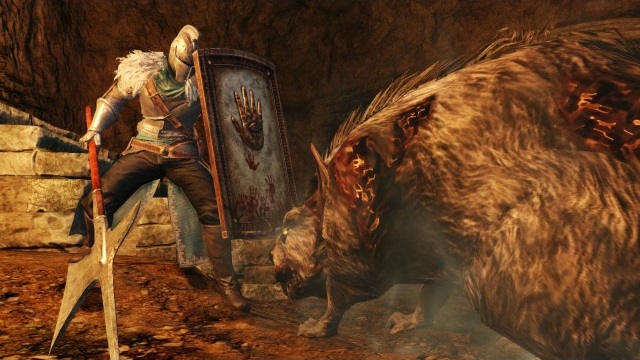 Bad dog. Down I say! Down!!!rn
Bad dog. Down I say! Down!!!rn -
Dark Souls II Review Images #7
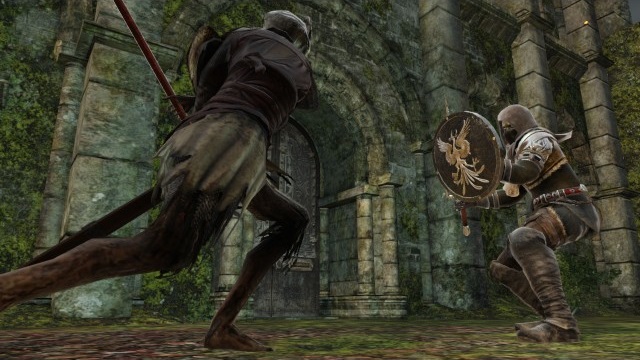 Shield up! Circle strafe!rn
Shield up! Circle strafe!rn -
Dark Souls II Review Images #8
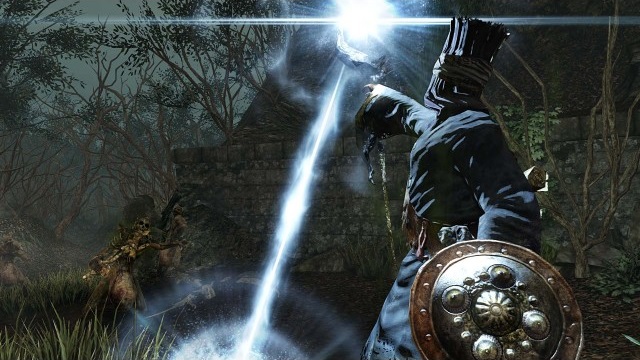 Just where is this sorcerer aiming?!rn
Just where is this sorcerer aiming?!rn -
Dark Souls II Review Images #9
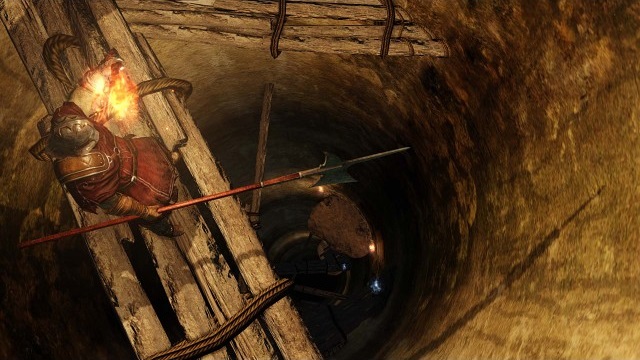 Don't look down... don't look down...rn
Don't look down... don't look down...rn -
Dark Souls II Review Images #10
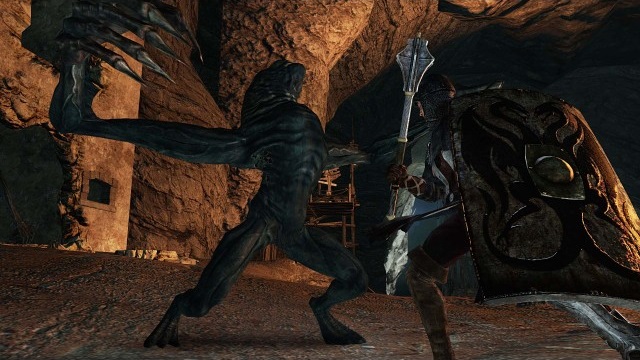 When did this become Silent Hill?rn
When did this become Silent Hill?rn




